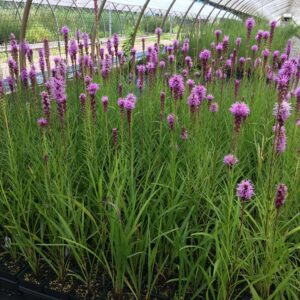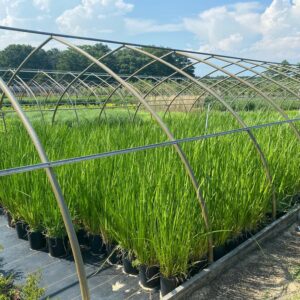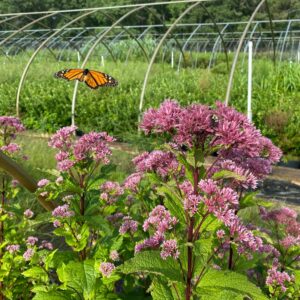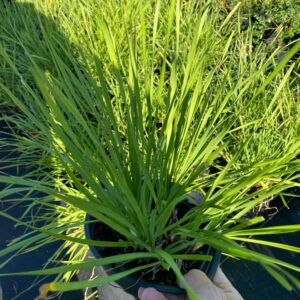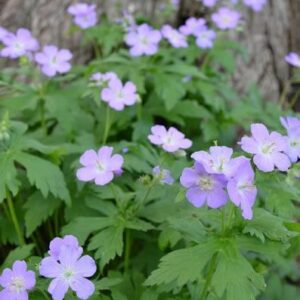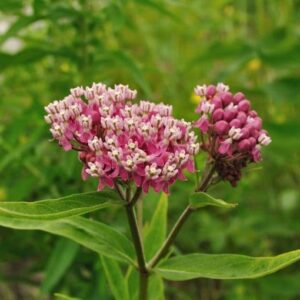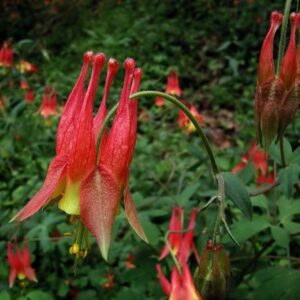- Ph: (631) 801-2855
- All Visits by Appointment Only
- info@linatives.com
- My Account
This herbaceous perennial plant is 2-3½’ tall. Sometimes it is slender and little branched, while at other times it branches frequently, creating a bushy appearance. The slender stems usually have lines of fine white hairs. The alternate leaves are linear and have smooth margins. The larger leaves have 3 conspicuous veins, although the smaller ones usually have only a single conspicuous vein. They are up to 4″ long and 3/8″ across, or slightly wider. Sometimes there are a few white hairs near the base of the leaves and along the central vein on the underside. There are clusters of small composite flowers at the apex of the plant and many of the upper side stems. These flower clusters are usually rather flat-headed, but they sometimes assume a round-headed appearance. Each composite flower is yellow, consisting of about 21-35 disk florets and ray florets (when considered together). It is only about 1/8″ across – smaller than the composite flowers of other goldenrods.
These compound flowers often bloom gradually, rather than simultaneously, with older flowers turning brown while younger flowers are still in the bud stage. The blooming period is late summer to early fall, and lasts about 1 month. Sometimes there is a mild floral scent. The root system is fibrous, and new plants develop vegetatively from rhizomes.
The preference is full sun and moist conditions. However, this plant tolerates drier conditions, and can be surprisingly drought tolerant. The soil should contain high amounts of organic matter; some varieties of this plant also grow in moist sandy soil. Powdery mildew seems to bother this goldenrod less often than many others. It is easy to grow, but can spread aggressively in moist sunny places.
Straight Species
$9.99 – $99.99
Please note: Most pictures represent mature plants. Unless otherwise specified, all of our plants are sold in 4″ pots to make shipping possible and will mature in time.
Learn more about how the process works and how our plants are delivered.



| Size | 1 Gallon, Full Flat (50) 2" Plugs, QUART |
|---|---|
| Moisture | |
| Native | |
| Special Attributes | |
| Sunlight | |
| Wetland Indicator |
This herbaceous perennial plant is 2-3½’ tall. Sometimes it is slender and little branched, while at other times it branches frequently, creating a bushy appearance. The slender stems usually have lines of fine white hairs. The alternate leaves are linear and have smooth margins. The larger leaves have 3 conspicuous veins, although the smaller ones usually have only a single conspicuous vein. They are up to 4″ long and 3/8″ across, or slightly wider. Sometimes there are a few white hairs near the base of the leaves and along the central vein on the underside. There are clusters of small composite flowers at the apex of the plant and many of the upper side stems. These flower clusters are usually rather flat-headed, but they sometimes assume a round-headed appearance. Each composite flower is yellow, consisting of about 21-35 disk florets and ray florets (when considered together). It is only about 1/8″ across – smaller than the composite flowers of other goldenrods.
These compound flowers often bloom gradually, rather than simultaneously, with older flowers turning brown while younger flowers are still in the bud stage. The blooming period is late summer to early fall, and lasts about 1 month. Sometimes there is a mild floral scent. The root system is fibrous, and new plants develop vegetatively from rhizomes.
The preference is full sun and moist conditions. However, this plant tolerates drier conditions, and can be surprisingly drought tolerant. The soil should contain high amounts of organic matter; some varieties of this plant also grow in moist sandy soil. Powdery mildew seems to bother this goldenrod less often than many others. It is easy to grow, but can spread aggressively in moist sunny places.
Straight Species
